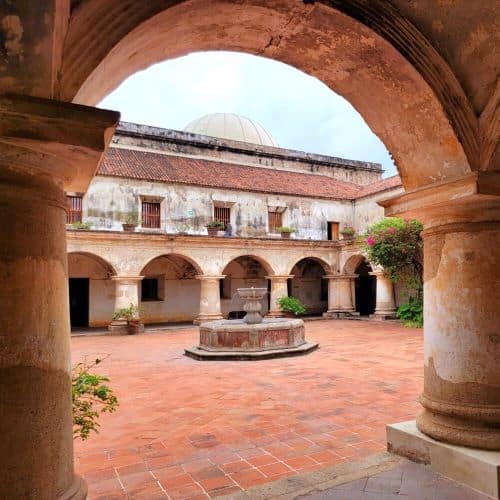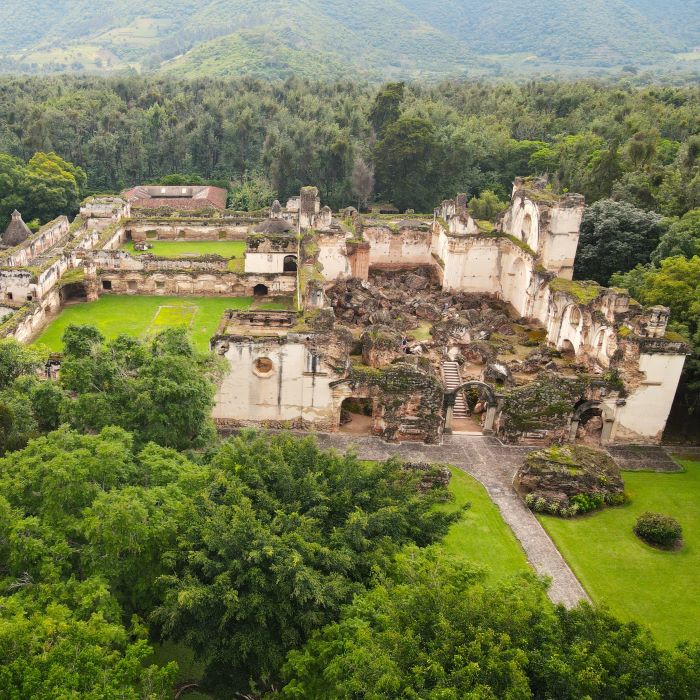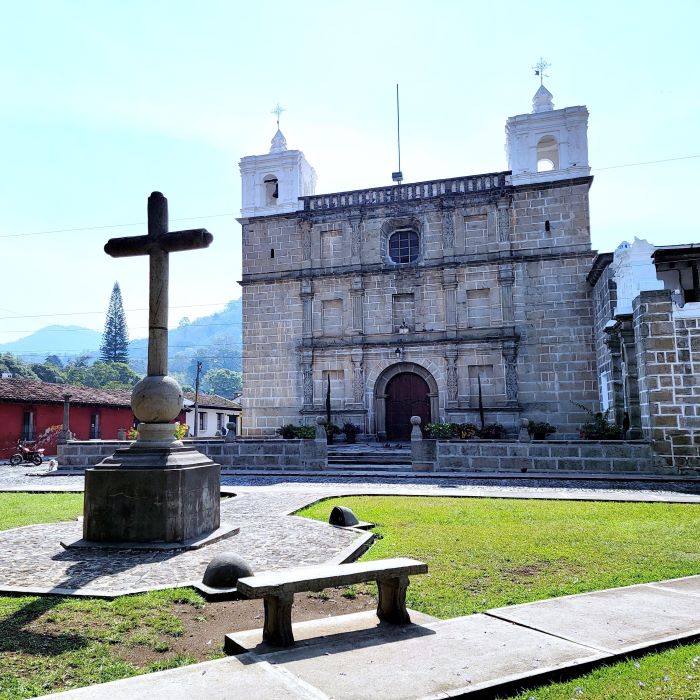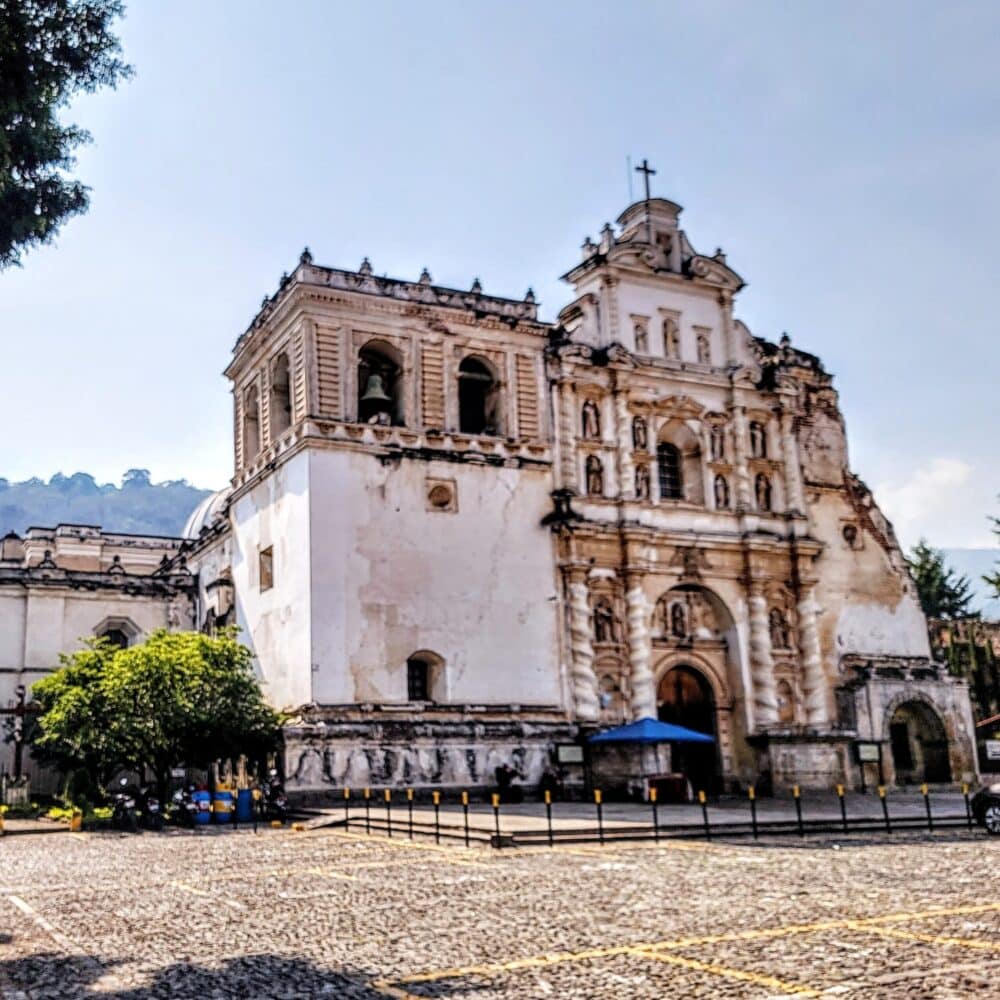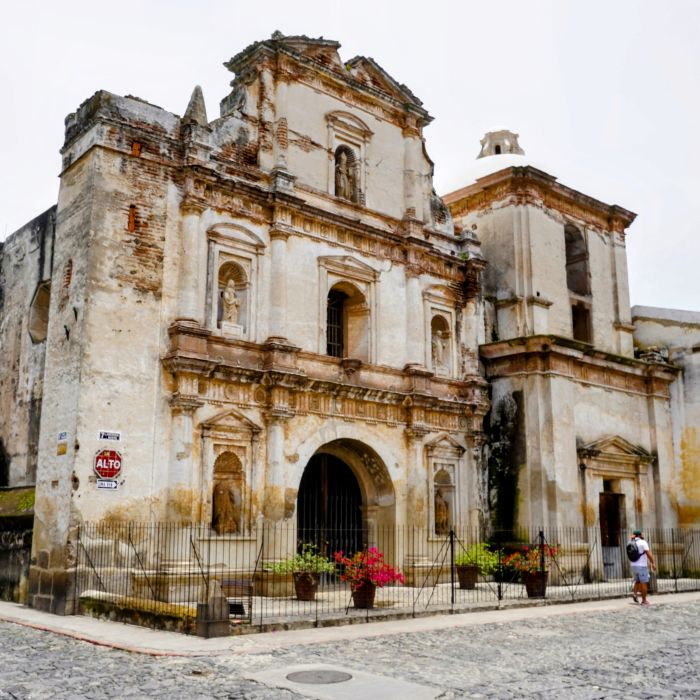Sights and Attractions
Perched atop the hills that surround the colonial city of Antigua Guatemala stands the Cerro de la Cruz, offering a panoramic vista that captures the essence of this remarkable destination. With its commanding views of the city’s architectural splendor and the breathtaking backdrop of surrounding volcanoes, Cerro de la Cruz is a must-visit spot for both locals and tourists seeking a memorable experience.
Located in the heart of Antigua, La Iglesia y Convento de las Capuchinas stands as a captivating destination that radiates tranquility and architectural splendor. This remarkable complex, one of Antigua’s most visited, invites visitors to immerse themselves in a serene and captivating experience within the city’s center. It also provides a unique insight into the political and religious concerns of the day during which this structure was erected, and its later fate.
Behind the Mercado Central, on the outskirts of Antigua, you will find the imposing ruins of this 18th century Church and Monastery built by the Franciscan Recollects from 1701 – 1715. Their Church was one of the largest in the former capital of Guatemala. Sadly, ravaged by earthquakes and neglect, only a skeletal structure remains of this once sprawling spiritual center, but it’s well worth a visit when visiting Antigua.
Iglesia Escuela de Cristo is a beautiful Spanish colonial, and still active, church located on the southeast side of Antigua. The original church and hermitage were built by the Franciscans in the early 16th century. It remained under their care until the Escuela de Cristo was founded in 1664. In 1730, Master Architect Diego de Porras rebuilt the church that you see here today. The church is particularly famous for its Holy Week processions, which draws large crowds of locals and visitors alike.
Iglesia San Francisco el Grande has a storied history that dates back to the 16th century. Built by the Franciscan Order, starting in 1579, this massive religious and cultural center encompassed four whole city blocks. The church still has regularly scheduled services and masses of people continue to visit the church to pay homage to Santo Hermano Pedro, whose remains are buried there. There is also a museum dedicated to the Saint housed within the ruins of the monastery. Over the years, the complex has withstood numerous earthquakes and restorations, testifying to the resilience of Antigua’s architectural treasures.
Discover the rich history and heritage of Antigua Guatemala at the Museo de San Agustín. Located in the restored ruins of the former Convent of San Agustín, this museum showcases the exhibition “Fragments of the Past,” featuring valuable archaeological pieces and a room dedicated to pre-Hispanic Mayan culture.
This Monument, dedicated to the Great Guatemalan poet and Jesuit priest Rafael Landívar, can be found on the Alameda de Santa Lucía in Antigua Guatemala. Landívar (1731 – 1793) is best known for his work, Rusticatio Mexicana; 15 books, 5348 verses, written in Latin, published in Europe, during his time in exile, after the Jesuits were expelled from the Spanish Colonies in 1767. It’s considered one of the greatest poetic descriptions of Latin America ever written. In 1950, Landívar’s remains were returned to Guatemala where they found their final resting place at this monument.


